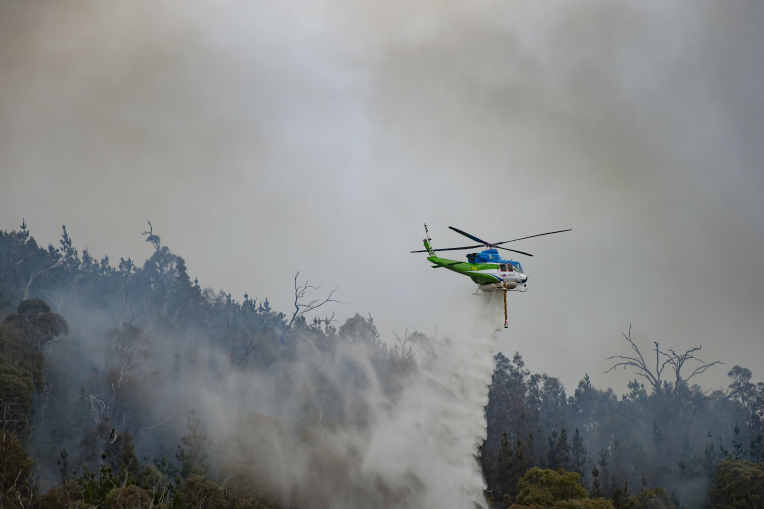Overhaul 'ad-hoc' aerial firefighting system: pilots
by Lucas BairdThe government is facing increasing pressure to upgrade national aerial firefighting capabilities before summer, with pilots calling for a new taskforce and an overhaul of the approach that has been derided as "ad hoc".
The current fleet for aerial firefighting includes mostly helicopters and fixed-wing planes with small load capacities instead of larger air-tankers, the bushfires royal commission observed. Many of these assets, according to the inquiry's interim observations, are based overseas and may prove difficult to acquire as fire seasons in both hemispheres begin to overlap.
Although Australia does have a National Aerial Firefighting Centre, this body was formed by the states and territories and does not own aircraft or employ pilots. Instead, it tenders for these services and shares the fleet across the nation.
The Australian Federation of Air Pilots, a trade union, seized on a draft recommendation from the inquiry for a "sovereign aerial firefighting capability of sufficient size and versatility to meet national needs".
AFAP president Louise Pole has called for the federal government to establish an aerial firefighting flight wing with aircraft registered in Australia and staffed by local pilots, many of whom have found themselves stood down or made redundant at the commercial airlines.
"We have many pilots who are literally on the ground with the skills that are required to cross-train on these aircraft that are used for firefighting," Ms Pole said.
The calls come in the wake of a bushfire season that killed 33 and, according to fire and emergency authorities, destroyed more than 3000 homes across 17 million hectares of torched land.

Former Fire and Rescue NSW commissioner Greg Mullins, who is now a member of the Climate Council, called the current approach "bloody ridiculous".
"There is no planned approach to it," he said. "It is all ad hoc. AFAC [the Australasian Fire and Emergency Service Authorities Council] have tried to change things up, but they are not a government body. The federal government is not stepping up."
Mr Mullins said Australia's 2020-21 fire season would likely be relatively benign compared with the previous one, primarily due to greater levels of moisture along the east coast. Still, he warned against any delay in establishing domestic aerial capabilities or complacency.
"We need our own capability, and because of the impacts of climate change, we can't rely on the northern hemisphere [to lease us firefighting aircraft]," Mr Mullins said.
He said this season would be the first real test of Australia's dependence on offshore aircraft, predicting the Californian fires would "stretch into December" and force US suppliers to reconsider sending their assets and pilots here.
Mr Mullins agreed with AFAP's appeal to train local pilots.
The union also floated possible conversion of the many passenger jets airlines have parked around the world during the COVID-19 downturn.
Mr Mullins said this was not a bad idea, given the planes would be relatively cheap to buy and convert at this point, and that five or six these planes could be the backbone of a national aerial firefighting force.
However, mid-sized 'Super Scooper' aircraft that can pick up water from a lake or reservoir would have to form the bulk of the fleet, he added.
"If there is a study done into the effectiveness of the big planes, it won't be pretty reading," he said. "The Scoopers are more versatile; if there is no water to land on, they can land on a dirt track and get filled up from a tank."